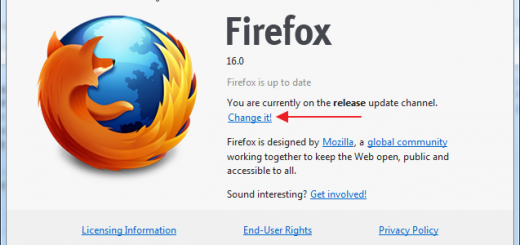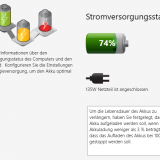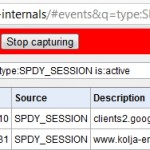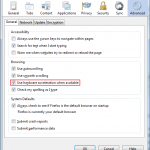Funktion von SPDY im Firefox testen
Für Google Chrome Nutzer ist es recht einfach zu testen, ob eine Webseite SPDY nutzt oder nicht.
Die Webseite https://developers.google.com/speed/spdy/mod_spdy/ listet dafür folgende Möglichkeiten auf:
- Start up Google Chrome with the flag
--use-spdy=npn(or use another SPDY-compatible browser). (By default Chrome disables SPDY for a small percentage of users; using the--use-spdy=npnflag simply ensures that Chrome does not do this.) - In one tab, load the special Chrome URL
chrome://net-internals/#spdy. - In a second tab, open up the Chrome developer tools panel (Wrench icon > Tools > Developer Tools) and switch to the „Network“ pane, then load an https URL from your server running mod_spdy.
- Just after the page loads, look at the
chrome://net-internals/#spdypage. Your server’s domain should be listed in the table under the „SPDY sessions“ heading. - Look also at the Chrome developer tools Network pane. If you click on one of the resources listed there that was served over https from your server, and then click on the „Headers“ tab, you should see „x-mod-spdy“ listed in the response headers.
Aber was ist mit dem Firefox? Hier gibt es mehrere Möglichkeiten. Entweder man schnappt sich Firebug, Live HTTP-Headers o.ä. und sucht im HTTP-Header nach dem x-mod-spdy Flag, welches nur vorhanden ist, wenn die Webseite über SPDY ausgeliefert wird oder man installiert sich die Erweiterung SPDY Indicator.
Dieses zeigt ab sofort in der Titelleiste einen kleinen grünen Blitz an, sobald das oben genannte Flag erkannt wurde















